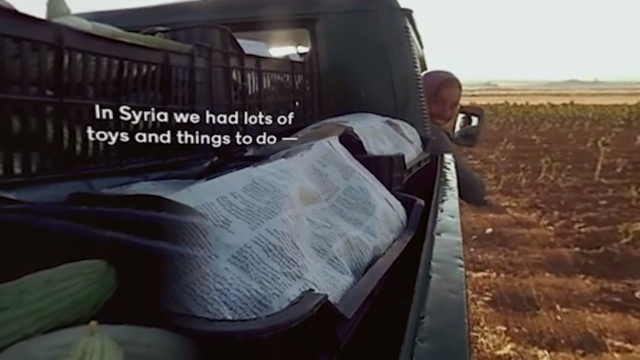
Entering the nascent industry of virtual reality, the New York Times has released a free application, New York Times Virtual Reality (NYTVR) that aims to give viewers a fully immersive viewing experience.
In partnership with Google, the Times distributed more than a million Google Cardboard viewing headsets to all its mail subscribers last month, and to this date has released three virtual reality features, along with some additional promotional and behind-the-scenes content.

In “The Displaced,” which chronicles the lives of three refugee children, viewers meet Oleg, a Ukrainian boy whose village has been reduced to rubble; Chuol, who has fled with his grandmother in order to escape the strife in South Sudan; and Hana, a Syrian refugee seeking asylum across the border in Lebanon. “Vigils in Paris” captures the mourning in the wake of the Paris terror attacks. And in the most recent feature film, “Take Flight,” you float above a city skyline, coming face to face with the year’s most noteworthy actors while suspended in the clouds.
While apps compatible with Cardboard are already available on Google Play and the App Store, most of these involve video gaming. The NYTVR app, on the other hand, is marketed as a kind of journalistic supplement. In reality, there is not that much content on the app (each feature film is less than 12 minutes long), but I thought it was worth downloading just to get a taste of the virtual reality experience.
Though it is certainly not the first large-scale foray into this kind of technology, the Times’ VR experiment is unique because of its accessibility — all that’s required is a smartphone, and if desired, an inexpensive cardboard apparatus.
The Google Cardboard itself looks like a boxy pair of binoculars. To use it, you simply insert your phone in the front flap of the Cardboard and peer through the plastic convex lenses. You can actually watch content from the NYTVR without Cardboard, but naturally, it’s a lot more immersive with the eyepiece.

The experience is truly remarkable. You hear the refugee children give harrowing testimonies of struggle and loss — yet manage to find fleeting moments of happiness — as you look around and survey the desolate landscape. The emotion is palpable when you witness the somber gatherings at the scenes of the attacks. And there is something exhilarating (albeit maybe a bit nauseating) about drifting away into the sky.
That being said, the app does have some technological issues. For the Cardboard viewing setting, the stereoscopic effect is somewhat finicky, so you end up having double vision if your screen isn’t perfectly aligned with the eyepiece. Also, the screen quality is disappointingly low, so the films appear somewhat grainy and pixelated. It’s marginally better in non-Cardboard mode.
For now, at least, virtual reality technology for the masses remains in an inchoate stage, and practically speaking, NYTVR is more of a novelty than a journalism staple. But there’s something enticing, even transcendent, about the notion of experiencing life through an entirely different lens — and that is the value in the app.

